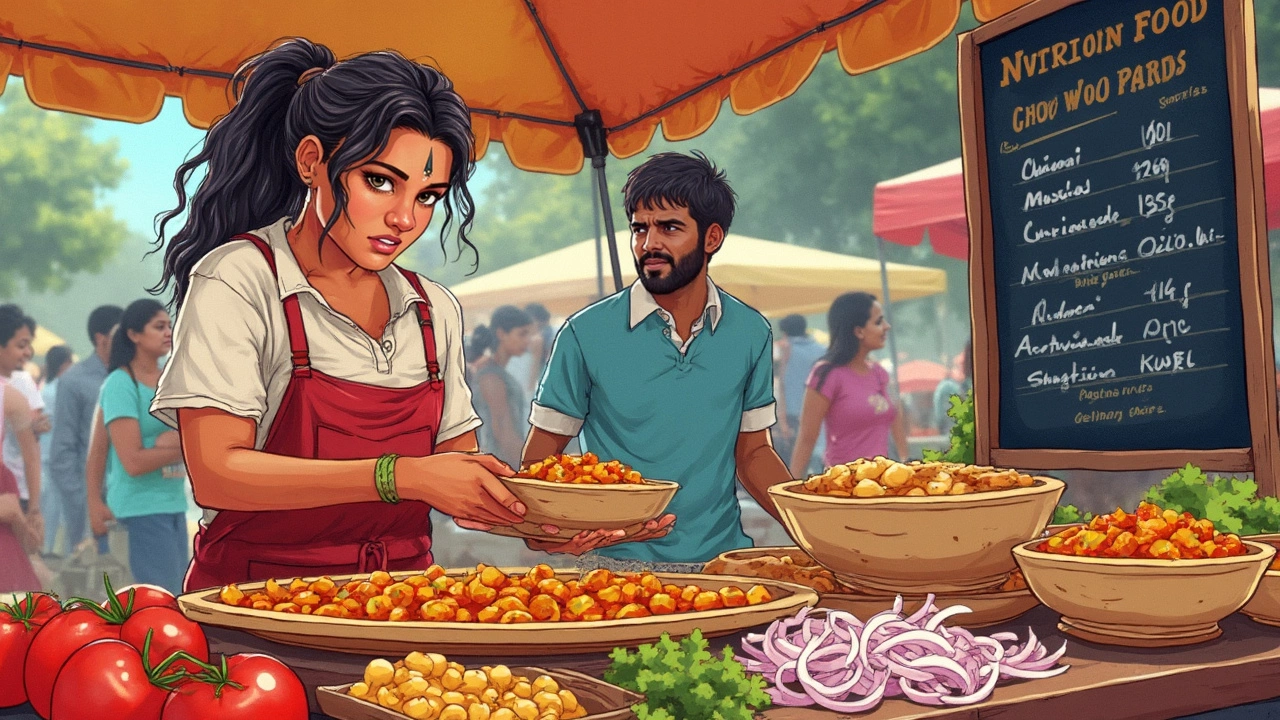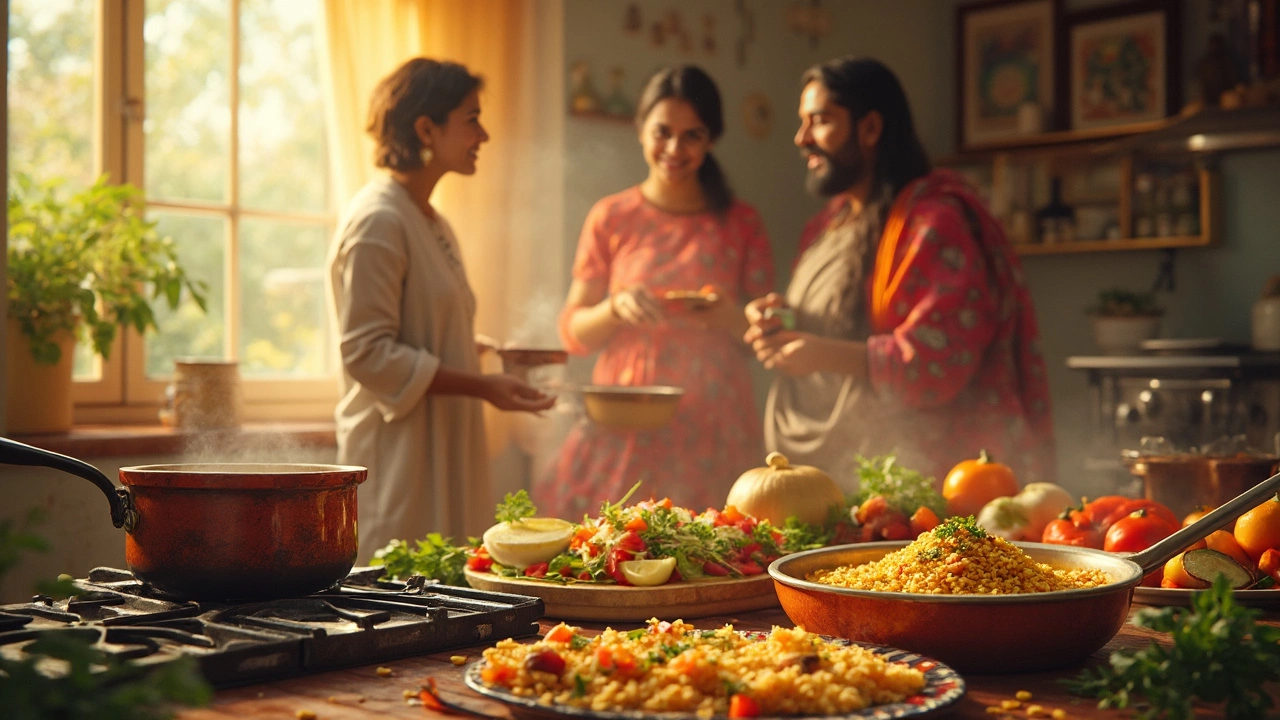Most people assume Indian curries are packed with calories and fat. Actually, a lot depends on the kind of curry you pick—and how you cook it. Some of the healthiest snacks around are simple, homemade curries with hardly any oil and plenty of fresh ingredients.
If you're eyeing a healthy option, look past the creamy restaurant gravies and focus on lighter curries. Things like chana masala (chickpea curry), tadka dal (spiced lentils), or even a spinach-based saag are full of fiber, protein, and vitamins. These aren't just filling, they actually help keep your blood sugar steady. That's a total win for anyone watching their snacking or trying to stay full longer.
- Myths About Curry and Health
- What Makes a Curry Healthy?
- The Best Curries for Nutritious Snacking
- Quick Swaps and Tips for Healthier Curries
Myths About Curry and Health
There's this big idea out there that every Indian curry is a guilty pleasure—super oily, drowned in cream, and bad for your waistline. That’s not really true. There are all sorts of curries, and the healthiest curry choices are often the simplest ones, loaded with vegetables, beans, or lentils. The stuff you see in restaurants is usually tweaked to be extra rich for flavor—not for daily eating.
People often think spicy means unhealthy, but that’s a myth too. The actual spices in curry (like turmeric, cumin, coriander, and chili) are super healthy. Research from Indian nutrition institutes shows turmeric can help lower inflammation, and lentils pack a punch of protein and fiber with very little fat.
Another common myth? The idea that all curry must be served with loads of rice or greasy naan. You can totally enjoy low-calorie curry options with a salad, roti made from chickpea flour, or even just on its own. What matters is what goes into the curry pot, not what’s assumed based on restaurant menus.
- Not all curries have coconut milk or cream. Plenty are tomato-based or broth-based, and these are usually lighter.
- The healthiest curry isn’t about being bland—it’s about skipping the heavy add-ons and choosing fresh ingredients.
| Curry Type | Calories (per Standard Serving) | Main Ingredients |
|---|---|---|
| Chana Masala | 180 | Chickpeas, tomatoes, onion, spices |
| Tadka Dal | 140 | Lentils, tomatoes, spices |
| Paneer Butter Masala | 380+ | Paneer, cream, butter, tomatoes |
If you grew up thinking curry is always a treat to avoid, it's time to look at the facts. Your next nutritious curry option could easily beat many so-called “healthy” snacks.
What Makes a Curry Healthy?
A healthy curry skips the heavy cream and fried extras. What you really want are curries based on lentils, beans, veggies, or lean proteins, plus loads of spices and herbs. The foundation matters—a base of tomatoes, onions, and garlic is already a step toward good nutrition.
Here’s what sets a healthy Indian curry apart:
- Less Oil: Using just a teaspoon or two of oil (or even skipping oil and using nonstick pans) makes a world of difference. Many classic curries are slow-cooked with minimal oil but tons of flavor.
- No Heavy Cream or Butter: Steer clear of sauces thickened with cream, ghee, or butter. Instead, yogurt or blended cashews give you richness with fewer calories and more nutrients.
- High Fiber and Protein: Dishes like chana masala (chickpea curry) and tadka dal (lentil curry) are loaded with plant protein and fiber, keeping you full for hours. These work great for anyone looking for low-calorie curry snacks.
- Spices with Health Benefits: Indian curries lean on turmeric, cumin, coriander, ginger, and garlic. Turmeric is famous for its anti-inflammatory perks, and garlic is great for heart health.
- Lots of Veggies: Curries that pack in spinach, cauliflower, peas, or okra aren’t just more colorful—they’re rich in vitamins, iron, and antioxidants without adding many calories.
Just to give you an idea, here’s a quick breakdown of calorie counts in popular curry bases:
| Curry Base | Calories (per serving) | Main Nutrients |
|---|---|---|
| Tadka Dal | 120 | Protein, fiber |
| Chana Masala | 150 | Fiber, protein, iron |
| Saag (Spinach Curry) | 110 | Vitamins A & C, iron |
| Paneer Makhani (Cream-Based) | 350+ | Fat, protein, calcium |
So, next time you crave a nutritious curry, go for lentil or veggie-rich options. And skip the creamy, oily gravies if you want something light and satisfying.

The Best Curries for Nutritious Snacking
Some healthy Indian curries make ridiculously good snacks. They’re easy to make, packed with real nutrition, and fill you up without that sluggish after-feeling. Here are a few standouts you should try snacking on:
- Chana Masala: This is chickpeas simmered with tomatoes, onion, garlic, ginger, and simple spices. Chickpeas are high in fiber and protein—half a cup packs about 7 grams of protein and 6 grams of fiber. Super filling and great for steady energy.
- Tadka Dal: Lentils with a spicy, garlicky tempering on top. Lentils are rich in iron, B vitamins, and more fiber than most grains. I always serve tadka dal with cucumber sticks or roasted papad for a snack that feels like a treat but goes easy on your waistline.
- Rajma Masala: Red kidney beans get their moment here. With lots of plant protein and hardly any fat, rajma is perfect with whole-grain crackers or a handful of baby spinach mixed in. My husband Kieron likes it cold for lunch instead of a salad.
- Palak Curry: Spinach and spices, sometimes with a bit of paneer or tofu. Spinach is loaded with iron and vitamins A and C. Palak curry is great if you want maximum nutrition for minimal calories—one cup has just around 150 calories if you keep the oil light.
Not all curries are created equal. Some are heavy in cream or coconut cream—think restaurant-style butter chicken or tikka masala. Snack-wise, it’s way better to stick with curries loaded with beans, lentils, or veggies and minimal fat.
| Curry | Calories (per cup) | Protein (g) | Fiber (g) |
|---|---|---|---|
| Chana Masala | 210 | 10 | 8 |
| Tadka Dal | 180 | 9 | 8 |
| Palak Curry | 150 | 7 | 6 |
| Rajma Masala | 220 | 12 | 7 |
If you're watching your sodium, make curries at home so you control the salt. Also, use whole spices—they taste better and have none of the hidden additives of pre-made curry powders.
"Basic curries with lentils or legumes offer lasting fullness and keep energy stable. They're the real winners for healthy snacking." – Dr. Nidhi Sharma, Nutrition and Wellness Consultant, Mumbai
For anyone who wants a low-calorie curry, just skip the ghee and cream, and use loads of tomatoes or onions for richness. You’ll get bright flavor and nutrition without weighing yourself down. Try one of these next time your stomach growls between meals—the difference is huge.
Quick Swaps and Tips for Healthier Curries
Love curry but worried about calories or carbs? It’s totally possible to ditch the guilt. The trick is to pay attention to ingredients and a couple of cooking methods. Restaurant versions often use buckets of oil and cream, but at home, you’re in charge. You can make most healthiest curry picks by just switching up some basics.
- Skip the Cream and Butter: Instead of adding cream or ghee, stir in plain low-fat yogurt or even coconut milk for creaminess. It gives you that silky texture with fewer calories.
- Cut Back on Oil: You really don’t need a cup of oil to sauté onions or garlic. One or two tablespoons is plenty. Even better, use a non-stick pan to use less oil but get all the flavor.
- Go Heavy on Veggies: Curries like vegetable jalfrezi or bhindi masala (okra curry) are full of nutrition. The more colorful veggies you add, the better for fiber and vitamins.
- Focus on Lean Protein: Swap fatty red meats for chickpeas, lentils, skinless chicken, or tofu. These protein sources are way better for your heart and waistline.
- Limit Packaged Mixes: Ready-made curry pastes are loaded with sodium and preservatives. Use fresh ginger, garlic, and spices instead for a healthier, tastier snack.
If you like facts, here’s a quick look at common swaps and what they save you:
| Swap | Calories Saved (per serving) |
|---|---|
| Heavy cream → plain low-fat yogurt | 70-100 |
| Regular fried paneer → homemade grilled paneer | 50-80 |
| Deep-fried veggies → stir-fried or steamed veggies | 60-120 |
And don’t be afraid to experiment. If you’re cooking for kids or picky eaters, try blending spinach (palak) into curries for a bright color boost and extra iron. It works way better than you’d think—my husband Kieron even asks for seconds!
“A curry can be delicious and healthy with just a few tweaks to the ingredients and cooking style. Use less oil and add more lentils or veggies to get the most nutrition.” — Rujuta Diwekar, nutritionist
So, next time you’re planning to whip up a healthy Indian snack, grab beans, greens, and fresh spices, and let the heavy stuff stay on the shelf. You’ll notice the difference in how you feel, and your taste buds won’t miss a thing.
